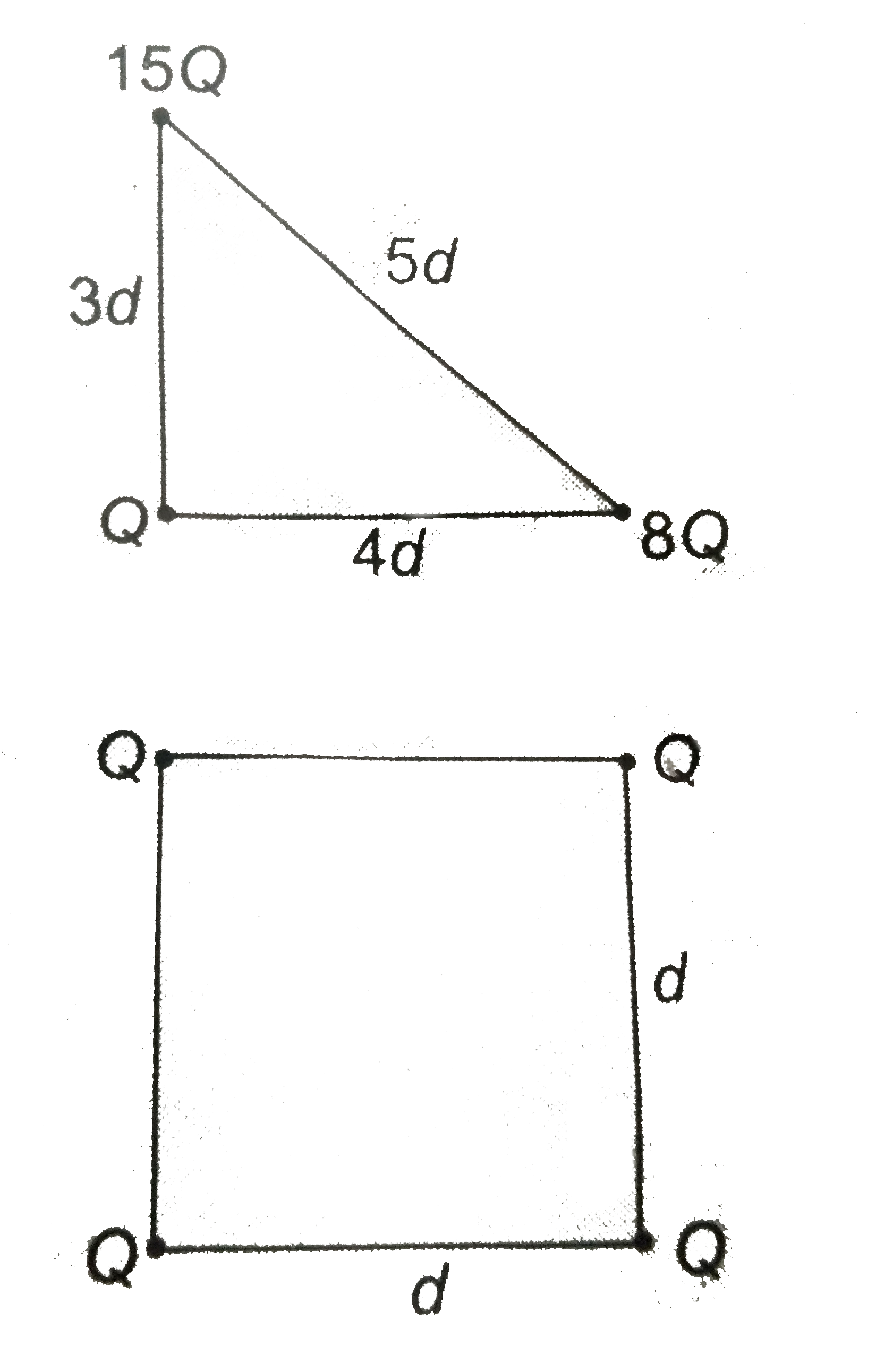Assertion (A): Electric potential and electric potential energy are two different quantities.
Reason (R ): For a test charge Q and a point charge Q, the electric potential energy becomes equal to the potential.
Both A and R are true and R is the correct explanation of A
Both A and R are true but R is NOT the correct explanation of A
A is true but R is false
A is false and R is True
The correct Answer is:C
To solve the assertion and reason question, we need to analyze both the assertion (A) and the reason (R) provided in the question.
Step 1: Analyze the Assertion (A)
The assertion states that "Electric potential and electric potential energy are two different quantities."
- Electric Potential (V): It is defined as the amount of electric potential energy per unit charge at a point in space. The formula for the electric potential V due to a point charge Q at a distance r is given by:
V=14πϵ0Qr
The unit of electric potential is volts (V).
- Electric Potential Energy (U): It is the energy possessed by a charge due to its position in an electric field. For a system of two point charges Q and q separated by a distance r, the electric potential energy U is given by:
U=14πϵ0Qqr
The unit of electric potential energy is joules (J).
Since electric potential is measured in volts and electric potential energy is measured in joules, they are indeed two different quantities.
Conclusion for Assertion (A):
The assertion is True.
Step 2: Analyze the Reason (R)
The reason states that "For a test charge Q and a point charge Q, the electric potential energy becomes equal to the potential."
- The electric potential energy U for a test charge q in the field of a point charge Q at a distance r is given by:
U=14πϵ0Qqr
- The electric potential V at that point due to the charge Q is given by:
V=14πϵ0Qr
Now, if we consider the electric potential energy in terms of the test charge q:
U=qV
This shows that electric potential energy is not equal to electric potential; rather, it is the product of the test charge and the electric potential.
Conclusion for Reason (R):
The reason is False.
Final Conclusion:
- Assertion (A) is True.
- Reason (R) is False.
Answer:
The correct answer is that Assertion (A) is true and Reason (R) is false.
---
The assertion states that "Electric potential and electric potential energy are two different quantities."
V=14πϵ0Qr
The unit of electric potential is volts (V).
U=14πϵ0Qqr
The unit of electric potential energy is joules (J).
The assertion is True.
The reason states that "For a test charge Q and a point charge Q, the electric potential energy becomes equal to the potential."
U=14πϵ0Qqr
V=14πϵ0Qr
U=qV
This shows that electric potential energy is not equal to electric potential; rather, it is the product of the test charge and the electric potential.
The reason is False.
- Assertion (A) is True.
- Reason (R) is False.
The correct answer is that Assertion (A) is true and Reason (R) is false.
Similar Questions
Knowledge Check
When the separation between two charges is increased, the electric potential energy of the charges
AIncreasesBDecreasesCMay increases or decreaseDRemains constant
Electric Potenial |Electric Potential Energy and its applications
View SolutionFind the electric potential energy of the system of charges.
(a)
View SolutionFind the electric potential energy of a uniformly charged sphere.
View SolutionFind the electric potential energy of a unifomly charged then spherical shell.
View SolutionWhen the separation between two charges is increased, the electric potential energy of the charges
View SolutionElectric Field||Electric Potential Energy||Electric Potential
View SolutionThree charges are placed as shown in fig if the electric potential energy of system is zero, then Q : q-

View Solution
